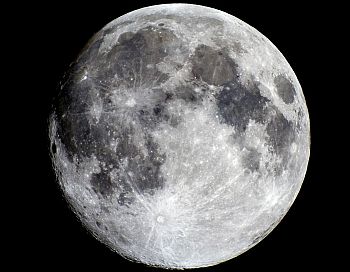 | « Back to article | Print this article |
Chandrayaan detects water on moon
India's maiden moon mission Chandrayaan-I has detected evidence of water across the lunar surface, scientists announced on Thursday.
Moon Mineralogy Mapper, a NASA instrument onboard Chandrayaan-I, detected wavelengths of reflected light that would indicate a chemical bond between hydrogen and oxygen in materials on the thin layer of upper soil.
Click on NEXT to read further...
Chandrayaan detects water on moon
The finding ends four-decade long speculation on whether there is water on moon.
Scientists first claimed that water existed on moon about 40 years ago after they analysed rock samples brought to earth as souvenirs by Apollo astronauts.
But they had doubts about the findings as the boxes in which the moon rocks were brought to earth had leaked contaminating the samples with air from the atmosphere.
Chandrayaan detects water on moon
Scientists believe that the water could have been formed due to interaction of oxygen present in rocks and soil on moon with hydrogen in the form of protons emitted by the sun as a result of nuclear fusion.
As these protons hit the moon, they break apart oxygen bonds in soil materials, and where free oxygen and hydrogen are together, there's a high chance that trace amounts of water will be formed, said Larry Taylor from the University of Tennessee, who was among the M3 team of scientists.The M3 instrument analyzed how sunlight reflected off the lunar surface to identify water particles in which scientists observed elements of chemical bonding alike water.
Chandrayaan detects water on moon
However, the instrument can only see the very uppermost layers of the lunar soil -- perhaps to a few centimeters below the surface.
They studied the light that is reflected in different wavelengths of different minerals, and used those differences to know what is present in the thin layer of upper soil
According to the scientists, it was water, previously theorised but not proven to exist only in permanently shadowed craters at the lunar poles.
Chandrayaan detects water on moon
Taylor and other M3 team members believe their findings will be of particular significance as mankind continues to plan for a return to the moon.
The lunar maps created by M3 could provide mission planners with prime locations for extraction of water from the lunar soil.
The findings will be published in this week's online edition of Science Express journal.



